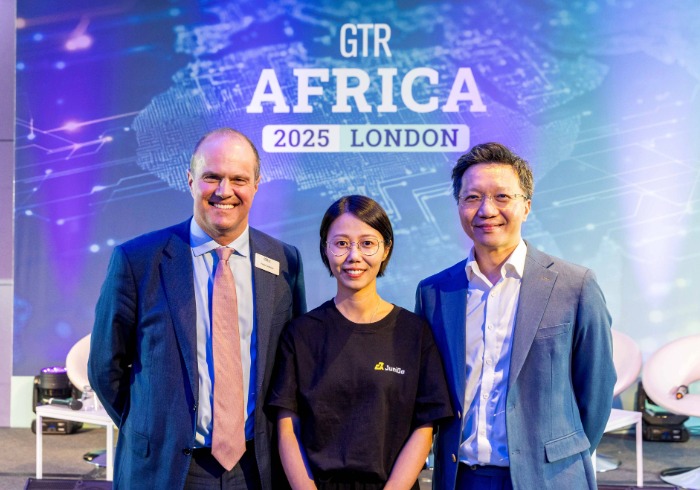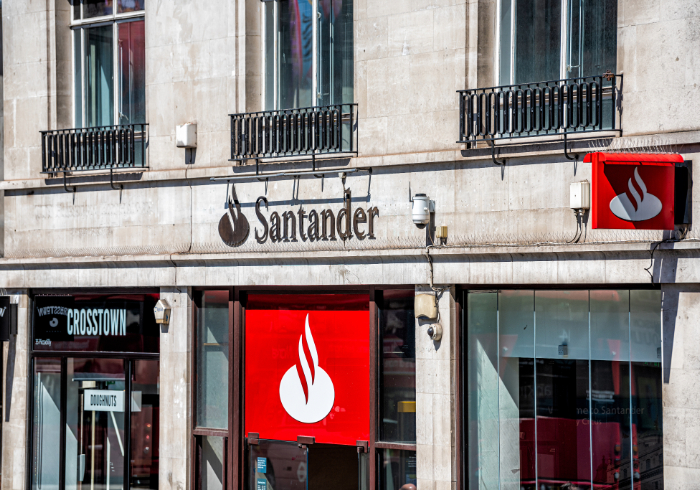A group of global banks and commodity players have formed a new venture to bring a blockchain-based platform for commodity trade finance into production by the end of 2018.
Under the name komgo, the entity will be run as an independent company that will host and develop the platform, the aim of which is to make commodity operations more efficient and secure.
It is the result of two proofs of concepts – known as Easy Trading Connect 1 and 2 – which were carried out in 2017 and earlier this year respectively.
The latest was completed in January in a collaboration between Louis Dreyfus Company, ING, Société Générale and ABN Amro. It saw 60,000 tonnes of soybeans shipped from the US to China, with the full set of digitised documents – including the sales contract, letter of credit and certificates – executed on the blockchain.
The founders of komgo are: ABN Amro, BNP Paribas, Citi, Crédit Agricole, Gunvor, ING, Koch Supply & Trading, Macquarie, Mercuria, MUFG Bank, Natixis, Rabobank, Shell, SGS and Société Générale.
Souleïma Baddi, deputy head of commodity trade finance at Société Générale Switzerland, has been appointed CEO of the new company, and is officially leaving the bank at the end of the month. Meanwhile, Toon Leijtens has left his role as blockchain developer at ING to become komgo’s new chief technology officer.
Speaking to GTR, Baddi says komgo is unique in that it’s backed by both banks and corporates, a different approach to the many bank-only consortiums that have emerged over the last couple of years to explore blockchain technology for their business.
“In terms of investors, our vision was to have a mix of banks and corporates. Even if we are talking about a financing platform, we think it’s very important to also have corporates as investors, to be sure that the product and the platform will answer to the industry needs,” she says.
Following a request for proposal process, in which the parties assessed a range of blockchain capabilities and firms, they partnered with ConsenSys in late May to build the platform. ConsenSys is a blockchain firm which develops solutions on the Ethereum network, and whose founder, Joseph Lubin, is among the co-founders of Ethereum.
Specifically, komgo will be based on Quorum, the enterprise-focused version of Ethereum. Explaining the decision to go with this over other technologies such as Corda and Hyperledger Fabric, Leijtens tells GTR that “Quorum is built on an open standard – the Enterprise Ethereum Alliance standard – and that is what we are aiming for”.
The plan is for the venture to go live with a production-stage platform before the end of the year. At this point it will be open to all banks and corporates who wish to join as users.
The platform will initially offer two products, but the idea is to digitise all trade and commodity finance products, Baddi explains. The first product will standardise and facilitate the KYC process.
“We have assessed the biggest pain points that the industry is facing today in the commodities area, and one of them is to perform the KYC task,” Baddi says. “The first very challenging part of KYC is the exchange of documents. The beauty of blockchain is that it allows you to exchange documents on an encrypted basis, which is not the case today – they are often exchanged by email, which is not secure, it’s not efficient, and it’s very difficult to find the information when you need it.”
Instead, komgo’s KYC module will allow users to exchange documents on a “need to know” basis, without using a central database, meaning that users keep their documents within their own premises.
Voltron or komgo?
The second product, digital letters of credit, will allow commodity houses or other players to submit digital trade data and documents to komgo customer banks.
As such, the platform seeks to address a challenge that continues to haunt the letter of credit: that it is an extremely paper-heavy process that can take weeks to be completed.
To prove the efficiency that blockchain can bring to this space, the second Easy Trading Connect transaction mirrored the paper-based process. The blockchain-based one was completed seven days before the paper-based documents had reached the negotiating bank.
The challenges around letters of credit is one that other players in the trade finance space are also trying to tackle with blockchain.
R3, for one, is currently building a platform for trade finance letters of credit together with a number of banks on the Corda platform. Under the name Voltron, it is most commonly known as the solution used for HSBC and ING’s first live trade transaction, which was completed in May. The consortium is now set to kick off the next pilot phase, before going into production in 2019.
But Baddi says komgo differs in that it has “a very strong commodity DNA”.
“Commodities are a very complex business. You cannot just take a trade finance LC and push it into the commodity space. You have much more documents, data, users, countries and regulations. It’s much more complex than trade finance,” she says.
Some banks are involved in both Voltron and komgo, such as ING. Speaking at the CordaCon conference earlier this month, Chris Sunderman, the bank’s blockchain initiative lead for trade finance services, said that while komgo “specifically focuses on the commodity market and uses a different technology”, it is “comparable to Voltron – the purpose is comparable”.
He hinted that the two may have to co-operate in the future. “In the end, we all have to work together to make the trade finance ecosystem work,” he said.
With its formation, komgo is undoubtedly proving that blockchain not only has the theoretical potential to disrupt the commodity trade finance space, but also has the wide backing from the industry to make this happen. However, it’s worth noting that Louis Dreyfus Company (LDC), which was involved in the second proof of concept, decided not to invest in komgo.
When asked by GTR why it is not among the founding members, Robert Serpollet, global head of trade operations at LDC, said that komgo “represents a very positive evolution” and “shows that the banking sector – and trade finance in particular – is taking steps to digitise financial instruments”.
“For LDC, not being a shareholder in the platform does not preclude future collaboration in our efforts to digitalise our full value chain,” he added.









